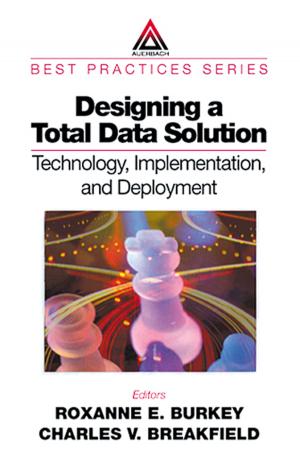Topographic Laser Ranging and Scanning
Principles and Processing
Nonfiction, Science & Nature, Technology, Remote Sensing| Author: | ISBN: | 9781351835459 | |
| Publisher: | CRC Press | Publication: | December 19, 2017 |
| Imprint: | CRC Press | Language: | English |
| Author: | |
| ISBN: | 9781351835459 |
| Publisher: | CRC Press |
| Publication: | December 19, 2017 |
| Imprint: | CRC Press |
| Language: | English |
A systematic, in-depth introduction to theories and principles of Light Detection and Ranging (LiDAR) technology is long overdue, as it is the most important geospatial data acquisition technology to be introduced in recent years. An advanced discussion, this text fills the void.
Professionals in fields ranging from geology, geography and geoinformatics to physics, transportation, and law enforcement will benefit from this comprehensive discussion of topographic LiDAR principles, systems, data acquisition, and data processing techniques. The book covers ranging and scanning fundamentals, and broad, contemporary analysis of airborne LiDAR systems, as well as those situated on land and in space. The authors present data collection at the signal level in terms of waveforms and their properties; at the system level with regard to calibration and georeferencing; and at the data level to discuss error budget, quality control, and data organization. They devote the bulk of the book to LiDAR data processing and information extraction and elaborate on recent developments in building extraction and reconstruction, highlighting quality and performance evaluations. There is also extensive discussion of the state-of-the-art technological developments used in: filtering algorithms for digital terrain model generation; strip adjustment of data for registration; co-registration of LiDAR data with imagery; forestry inventory; and surveying.
Readers get insight into why LiDAR is the effective tool of choice to collect massive volumes of explicit 3-D data with unprecedented accuracy and simplicity. Compiled by leading experts talking about much of their own pioneering work, this book will give researchers, professionals, and senior students novel ideas to supplement their own experience and practices.
A systematic, in-depth introduction to theories and principles of Light Detection and Ranging (LiDAR) technology is long overdue, as it is the most important geospatial data acquisition technology to be introduced in recent years. An advanced discussion, this text fills the void.
Professionals in fields ranging from geology, geography and geoinformatics to physics, transportation, and law enforcement will benefit from this comprehensive discussion of topographic LiDAR principles, systems, data acquisition, and data processing techniques. The book covers ranging and scanning fundamentals, and broad, contemporary analysis of airborne LiDAR systems, as well as those situated on land and in space. The authors present data collection at the signal level in terms of waveforms and their properties; at the system level with regard to calibration and georeferencing; and at the data level to discuss error budget, quality control, and data organization. They devote the bulk of the book to LiDAR data processing and information extraction and elaborate on recent developments in building extraction and reconstruction, highlighting quality and performance evaluations. There is also extensive discussion of the state-of-the-art technological developments used in: filtering algorithms for digital terrain model generation; strip adjustment of data for registration; co-registration of LiDAR data with imagery; forestry inventory; and surveying.
Readers get insight into why LiDAR is the effective tool of choice to collect massive volumes of explicit 3-D data with unprecedented accuracy and simplicity. Compiled by leading experts talking about much of their own pioneering work, this book will give researchers, professionals, and senior students novel ideas to supplement their own experience and practices.















